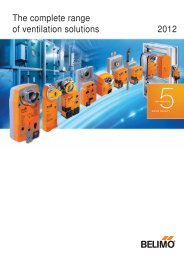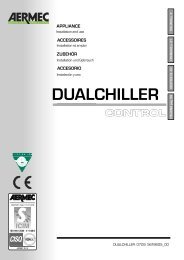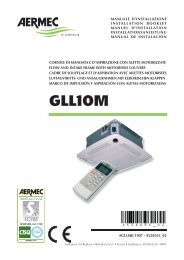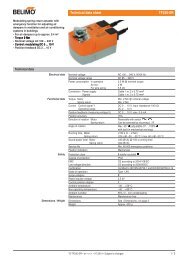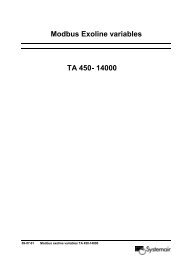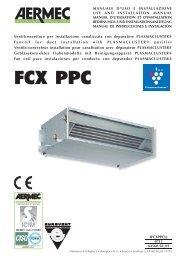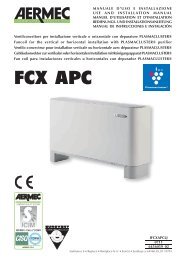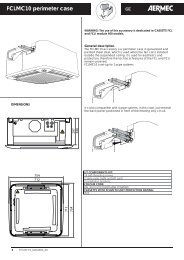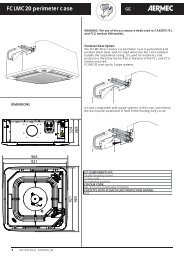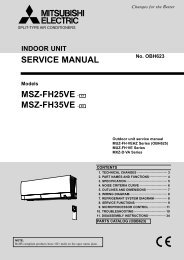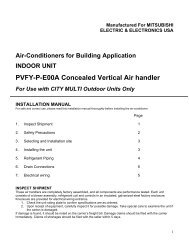Mitsubishi Electric Hydro Units Operation Manual
Mitsubishi Electric Hydro Units Operation Manual
Mitsubishi Electric Hydro Units Operation Manual
Create successful ePaper yourself
Turn your PDF publications into a flip-book with our unique Google optimized e-Paper software.
2<br />
<strong>Electric</strong>al power input<br />
3<br />
introduction<br />
The purpose of this user manual is to inform users how their air source heat<br />
pump heating system works, how to run the system at its most efficient and how<br />
to change settings on the main controller.<br />
overview of the System<br />
The <strong>Mitsubishi</strong> <strong>Electric</strong> Air to Water (ATW) heat pump system consists of the following<br />
components; outdoor heat pump unit and indoor cylinder unit or hydrobox<br />
incorporating main controller.<br />
How the Heat Pump Works<br />
Space heating and dHW<br />
Heat pumps take electric energy and low grade heat energy from the outdoor air<br />
to heat refrigerant which in turn heats water for domestic use and space heating.<br />
The efficiency of a heat pump is known as the Coefficient of Performance or COP<br />
this is the ratio of heat delivered to power consumed.<br />
The operation of a heat pump is similar to a refrigerator in reverse. This process<br />
is known as the vapour-compression cycle and the following is a more detailed<br />
explanation.<br />
1 kW<br />
Low temperature renewable heat<br />
energy taken from the environment<br />
2 kW<br />
Useful energy output<br />
3 kW<br />
This appliance is not intended for use by persons (including children) with<br />
reduced physical, sensory or mental capabilities, or lack of experience and<br />
knowledge, unless they have been given supervision or instruction concerning<br />
the use of the appliance by a person responsible for their safety.<br />
Children should be supervised to ensure they do not play with the appliance.<br />
this user manual should be kept with the unit or in an accessible place for<br />
future reference.<br />
Schematic of package cylinder system<br />
3. Expansion valve<br />
2. Condenser<br />
(Plate heat exchanger)<br />
4. Evaporator<br />
(Outdoor unit air heat exchanger)<br />
1. Compressor<br />
The first phase begins with the refrigerant being cold and low pressure.<br />
. The refrigerant within the circuit is compressed as it passes through the compressor.<br />
It becomes a hot highly pressurised gas. The temperature also rises<br />
typically to 60°C.<br />
2. The hot refrigerant gas is then condensed as it passes across one side of a<br />
plate heat exchanger. Heat from the refrigerant gas is transferred to the cooler<br />
side (water side) of the heat exchanger. As the temperature of the refrigerant<br />
decreases its state changes from a gas to a liquid.<br />
3. Now as a cold liquid it still has a high pressure. To reduce the pressure the liquid<br />
passes through an expansion valve. The pressure drops but the refrigerant<br />
remains a cold liquid.<br />
4. The final stage of the cycle is when the refrigerant passes into the evaporator<br />
and evaporates. It is at this point when some of the free heat energy in the outside<br />
air is absorbed by the refrigerant.<br />
It is only the refrigerant that passes through this cycle; the water is heated as it<br />
travels through the plate heat exchanger. The heat energy from the refrigerant<br />
passes through the plate heat exchanger to the cooler water which increases in<br />
temperature. This heated water enters the primary circuit and is circulated and<br />
used to serve the space heating system and indirectly heat the contents of the<br />
DHW cylinder (if present).



